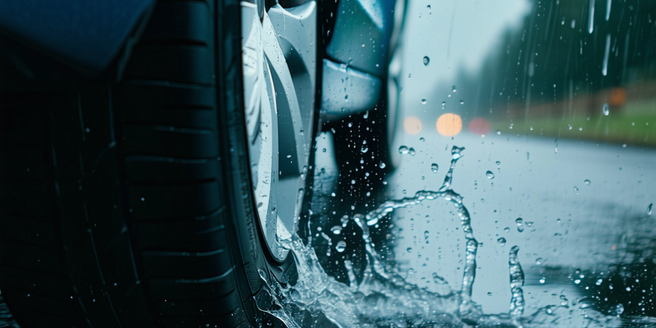
Understanding the Risks of Wet Road Conditions
Driving on wet roads significantly increases the risk of accidents due to reduced traction and hydroplaning. Water creates a barrier between the tire and the road, making it difficult for tires to maintain grip. In such conditions, vehicles may slide uncontrollably, especially during sudden maneuvers or emergency braking. Hence, selecting the right tires with enhanced water-dispersing capabilities is crucial. Wet roads also increase stopping distances, adding to the danger. Proper maintenance, such as checking tire treads and pressures regularly, can mitigate some risks. Awareness and careful driving are key factors to ensuring safety. Being informed about wet road conditions can help drivers make safer choices, ensuring that the journey remains as secure as possible.
Key Features of Tires Designed for Wet Roads
Tires designed for wet roads incorporate several essential features to enhance safety. These include specialized tread patterns, which effectively channel water away from the tire’s surface to reduce hydroplaning risks. Deep and wide grooves allow for better water displacement, maintaining optimal contact with the road. Another key feature is the rubber compound used. Tires with silica-enhanced compounds offer better traction on wet surfaces by remaining flexible even in colder temperatures. Siping, or small slits in the tread, also contributes to increased grip by providing additional biting edges. Selecting tires that focus on water evacuation, durability, and adherence to surface conditions significantly aids in improving wet road safety, ensuring drivers can maintain control and stability during inclement weather.
Comparing Tread Patterns for Optimal Grip
Tread patterns play a vital role in determining a tire’s performance on wet roads. Symmetrical and directional tread patterns are common in wet-weather tires. Symmetrical designs provide consistent performance and are known for their versatility and quiet ride. Directional patterns, on the other hand, excel at evacuating water due to their V-shaped grooves, offering superior wet traction and resistance to hydroplaning. Asymmetrical patterns combine different tread designs to maximize dry and wet traction. Each pattern type presents unique benefits, and choosing the right one depends on individual driving needs, local climate, and road conditions. Comparing these patterns helps consumers make informed decisions, ultimately enhancing their safety and driving experience on waterlogged roads.
Importance of Proper Tire Pressure in Wet Weather
Maintaining proper tire pressure is critical for safe driving in wet conditions. Underinflated tires increase the risk of hydroplaning by preventing the treads from effectively dispersing water. It is advisable to check your tire pressure at least once a month. In contrast, overinflated tires reduce the contact patch, lowering traction. Regularly checking tire pressure ensures optimal grip and vehicle stability. Proper inflation also contributes to fuel efficiency and extends tire life. During seasonal changes, fluctuations in temperature can affect tire pressure; thus, adjusting to the recommended levels is important. In wet weather, where stopping distances are compromised, ensuring adequate tire pressure becomes even more crucial to maintain control and reduce accident risks, benefiting overall vehicle safety and performance.
Top Tire Brands for Enhanced Wet Road Safety
Several tire brands are renowned for producing high-performance tires suited for wet conditions. Michelin, Goodyear, and Bridgestone offer specialized tire models focused on wet traction. Michelin’s HydroEdge technology is designed for superior water evacuation, providing excellent braking in the rain. Goodyear’s Assurance line incorporates unique rubber compounds and tread patterns for enhanced grip and durability. Bridgestone’s Turanza series balances comfort with outstanding wet-road capabilities. It’s important for drivers to consider factors like tire size and road conditions when selecting the right model for their vehicle. Pirelli and Continental also offer tires known for their reliability in wet conditions, focusing on innovative designs and materials. Choosing a reputable brand ensures quality, performance, and enhanced safety on wet roads, offering drivers confidence during their journeys.
